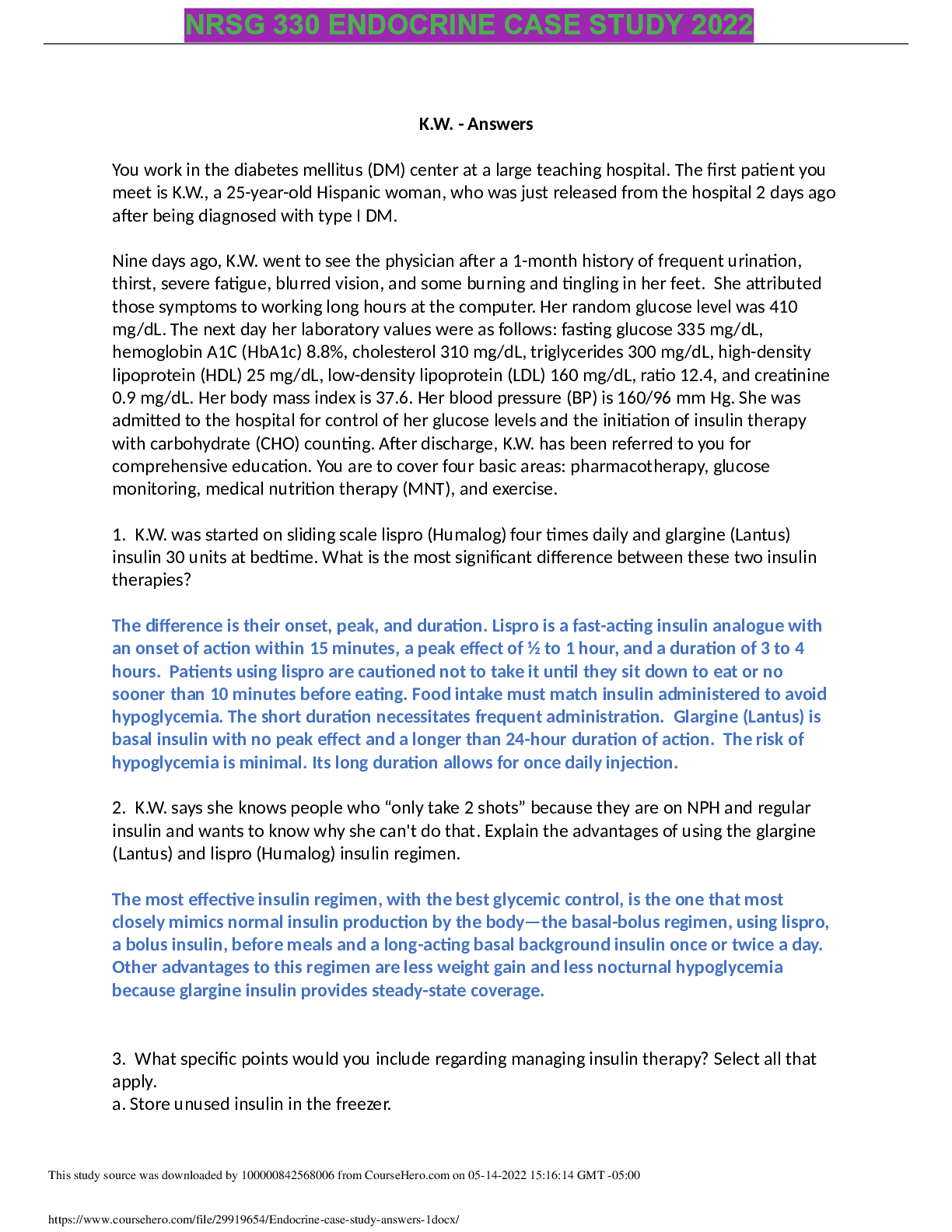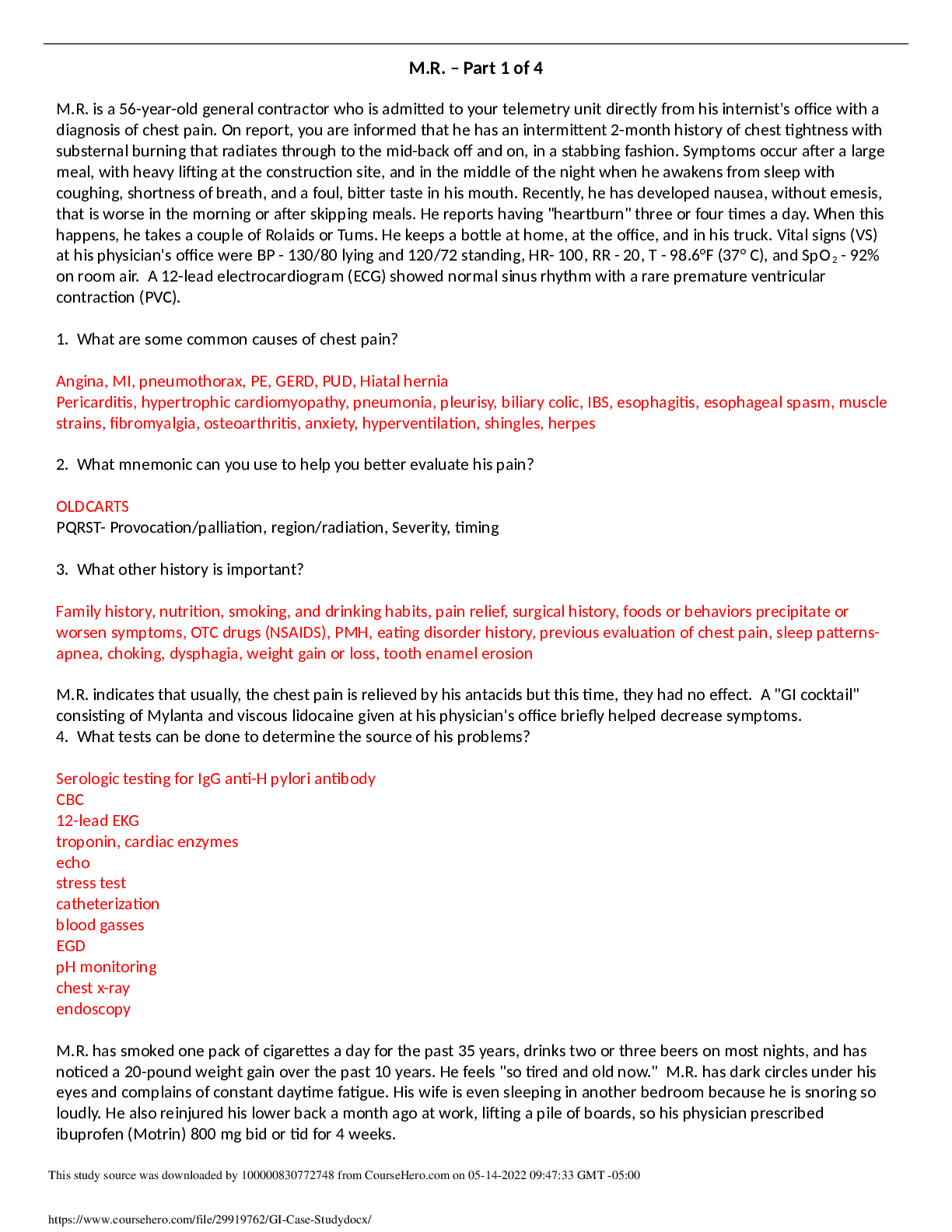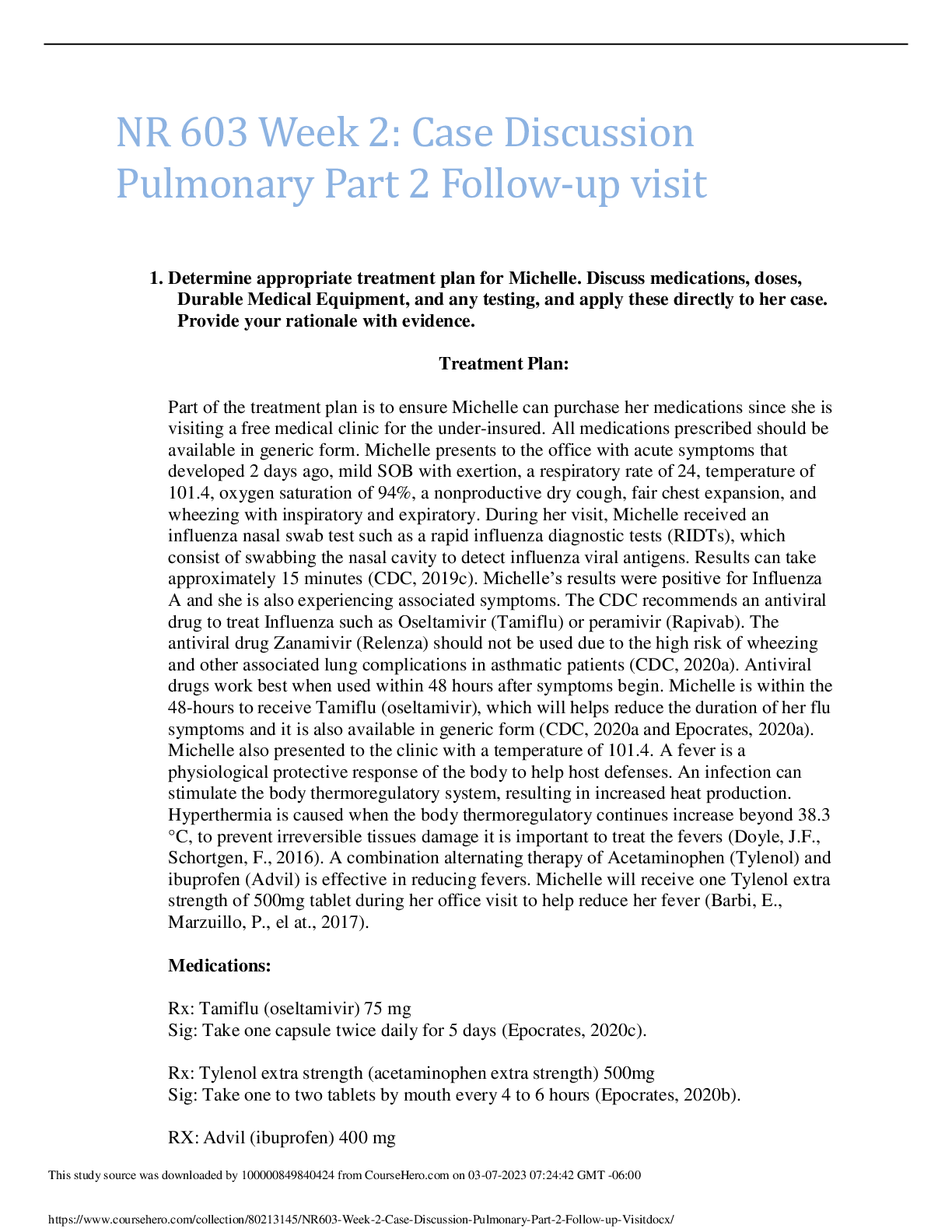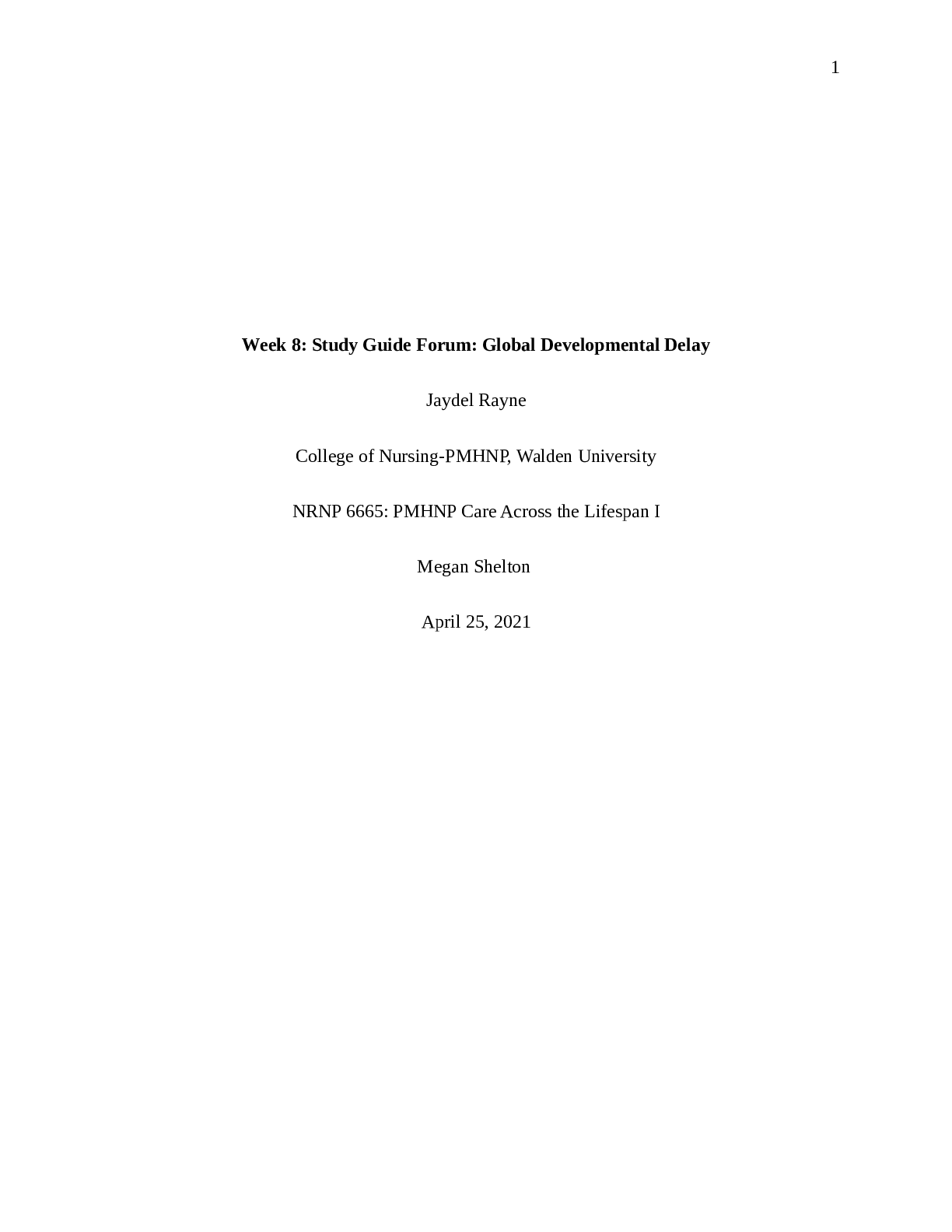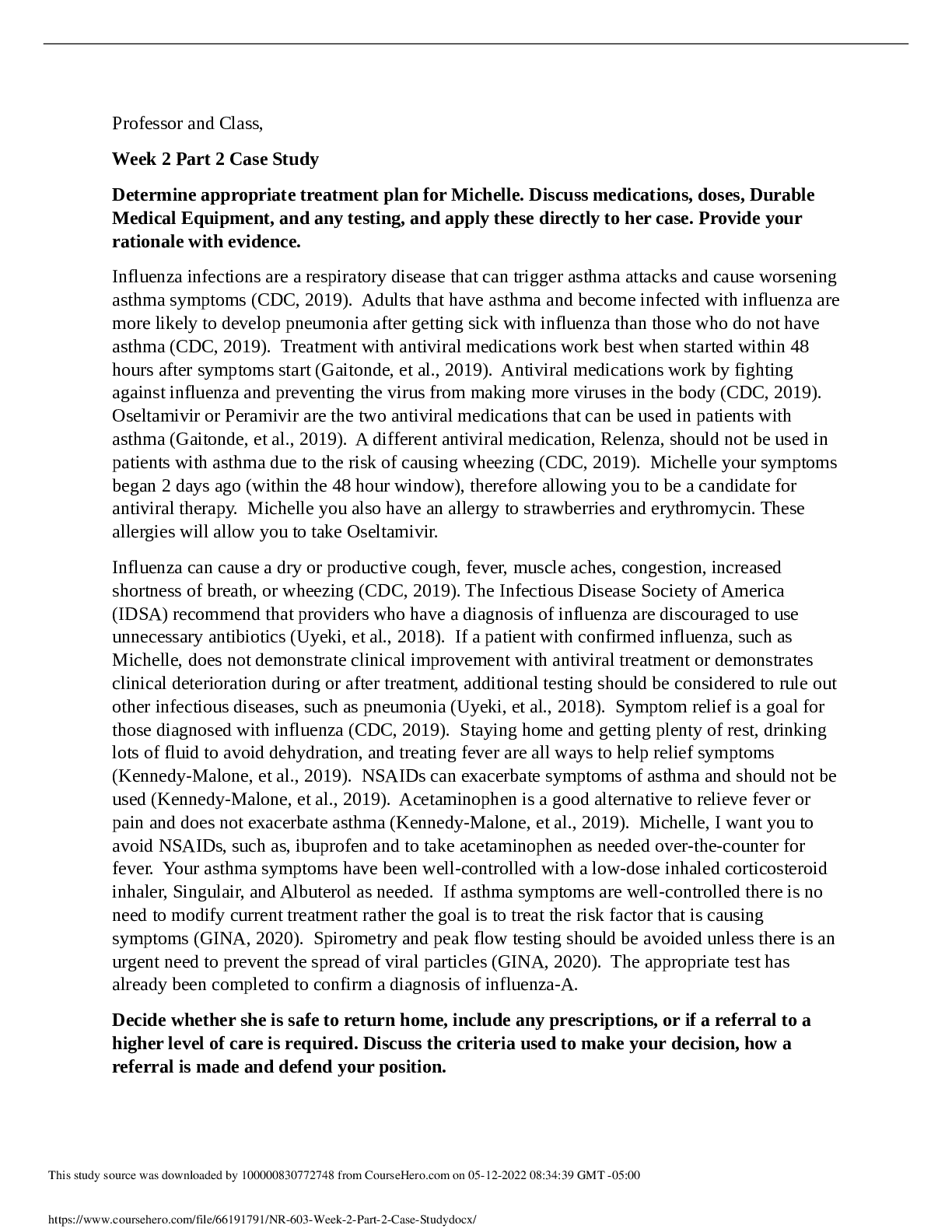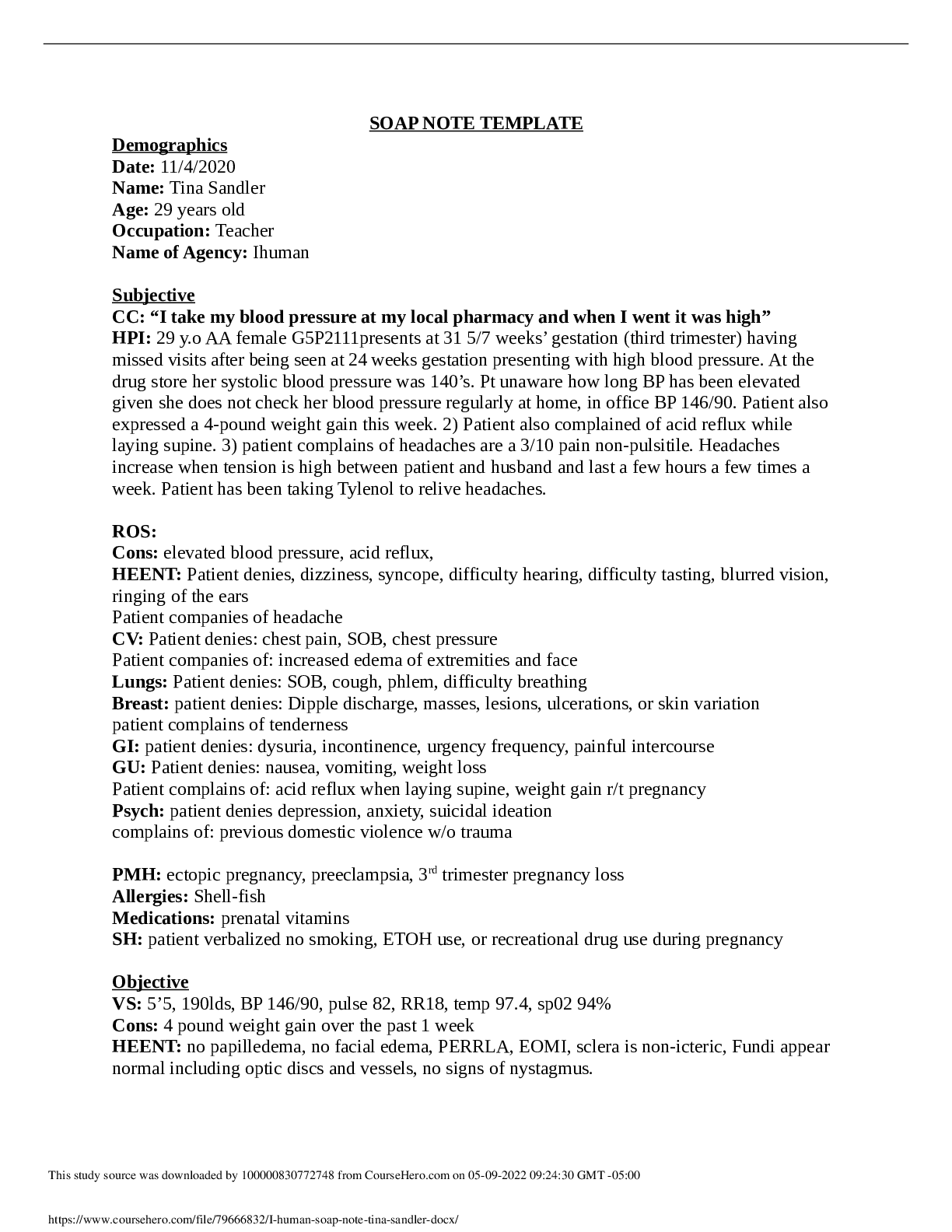Health Care > CASE STUDY > NR 601 week 5 assignment. (All)
NR 601 week 5 assignment.
Document Content and Description Below
Running head: CASE STUDY ASSIGNMENT 1 Week 5 Case Study Assignment Chamberlain college of Nursing NR 601: Primary Care of the Maturing and Aged Family October 6, 2019 CASE STUDY ASSIGNMENT Week... 5 Case Study Assignment Mrs. Wong is 59 years old Asian female presents to the office for follow up after three months, and complaints of increasing fatigue over the last 12 weeks. She also reported after her menopause 4 years ago she had experiencing a gradual weight gain. She has been exercise at least twice a week, but unsuccessful. The purpose of this paper is to use subjective and objective data that is provided to develop an appropriate diagnosis and plan for Mrs. Wong. This assignment will discuss the assessment of the primary diagnosis, secondary diagnosis, and the differential diagnoses for Mrs. Wong, and the management plan for treatment of the above diagnosis. It will consist of diagnostics, medications, education, referrals, and follow-up care. This paper also includes a discussion on medication costs of all prescribed and over the counter (OTC) medications. Assessment Mrs. Wong came to the office complains of fatigue. Despite exercising twice a week, she is unable to lose weight. She also reported an increase of hunger for past two months. Per morning lab result, urine analysis is positive for glucose, total cholesterol is elevated, a decreased in low-high density lipoprotein, and HbA1c is 6.6%. According to Cash and Glass (2017), fasting blood glucose greater than 126 and HbA1c of 6.5% is considered diabetic. Primary Diagnosis Diabetes Mellitus Type 2 (DM2) (E11.9). Pathophysiology: The primary diagnostic for Mrs. Wong is diabetes mellitus type two. Diabetes Mellitus is a chronic disease, which is due to a decrease or lack of insulin secretion, or/and inability of cells to utilize insulin (Ramachandran, 2014). According to Goroll (2014), diabetes type two occurs when pancreas is unable to produce enough insulin to meet the metabolic needs CASE STUDY ASSIGNMENT of the body. Common signs and symptoms include polydipsia, polyuria, polyphagia and extreme fatigue (Dunphy, 2015). Pertinent Positive findings: Weight gain, polyuria, polydipsia, fatigue, fasting blood glucose of 127, HbA1c of 6.6, positive glucose in urine, and elevated CO2 of 29. According to the ADA, 2019 guidelines, Asian American population age of 45 or greater with a BMI more than 23 kg/m2, and HbA1c equal or greater to 6.5% on initial testing is considered diabetes (ADA, 2018.p 29). Pertinent Negative Findings: Patient exercise regularly, former smoker, normal BUN, creatinine and GFR, skin dry and intact, negative ketones in urine analysis, (ADA, 2018). Rationale for the diagnosis: Diabetes mellitus type two is the chosen primary diagnosis for Mrs. Wong is based on her laboratory results of fasting plasma glucose of 127, and hemoglobin A1C level above 6.5 percent, and clinical presentation of fatigue, hunger and thirst. Also Mrs. Wong’s BMI put her at greater risk to develop diabetes because data has shown that in Asian Americans a BMI greater than 23 kg/m2 puts an individual at increased risk of diabetes mellitus (ADA, 2019). Secondary Diagnosis: Hyperlipidemia, unspecified (E78.5) Pathophysiology: Hyperlipidemia is a major cardiovascular risk factor that increases the rate of atherosclerosis disease in the general population (Kennedy- Malone, Plank & Duffy, 2019). The primary cause of hyperlipidemia is genetic mutations that result in the overproduction or defective elimination of triglycerides and LDL or the underproduction of excessive elimination of HDL (Dunphy, 2015). The secondary cause of hyperlipidemia is a sedentary lifestyle with dietary choices that consist of saturated and trans fats and CASE STUDY ASSIGNMENT cholesterol. There are no signs and symptoms associated with the disease however the risk of developing symptomatic vascular disease increases (Dunphy, 2015). Pertinent positive findings: Objective findings that are pertinent to the diagnosis of hyperlipidemia in Mrs. Wong include a cholesterol of 215 mg/dl, LDL 144 mg/dl, VLDL 36 mg/dl, HDL 32 and Triglycerides 229 (Grundy, Stone, Bailey, Beam, Birtcher, Blumenthal & Yeboah, 2018). Pertinent negative findings: Subjective negative findings for Mrs. Wong’s diagnosis of hyperlipidemia include regular physical activity and being a former smoker (Grundy et al., 2018) Rationale for the diagnosis: Mrs. Wong’s lipid panel result indicated elevated cholesterol. According to Kennedy- Malone, Plank and Duffy (2019), Mrs. Wong is at a higher risk of coronary artery disease due to ethnicity because failure to identify at risk females and the discrepancy is higher among minority females. Differential Diagnosis: Obesity (E66) Pathophysiology: McCance and Huether (2015) explained that obesity is an increase in adipose tissue causes a dysfunction of the body adipokines (cell-signaling proteins). Adipokines are involved with the regulation of food and fat storage as well as the body’s metabolism and tissue sensitivity causing an increase in adipose tissue. Pertinent positive Findings: Weight 165, height 5’ 1.5”, fatigue, decreased energy and weakness, gained four pounds over three months, and hunger. Pertinent Negative Findings: Patient walking on the treadmill and going to the gym. [Show More]
Last updated: 1 year ago
Preview 1 out of 19 pages
Instant download
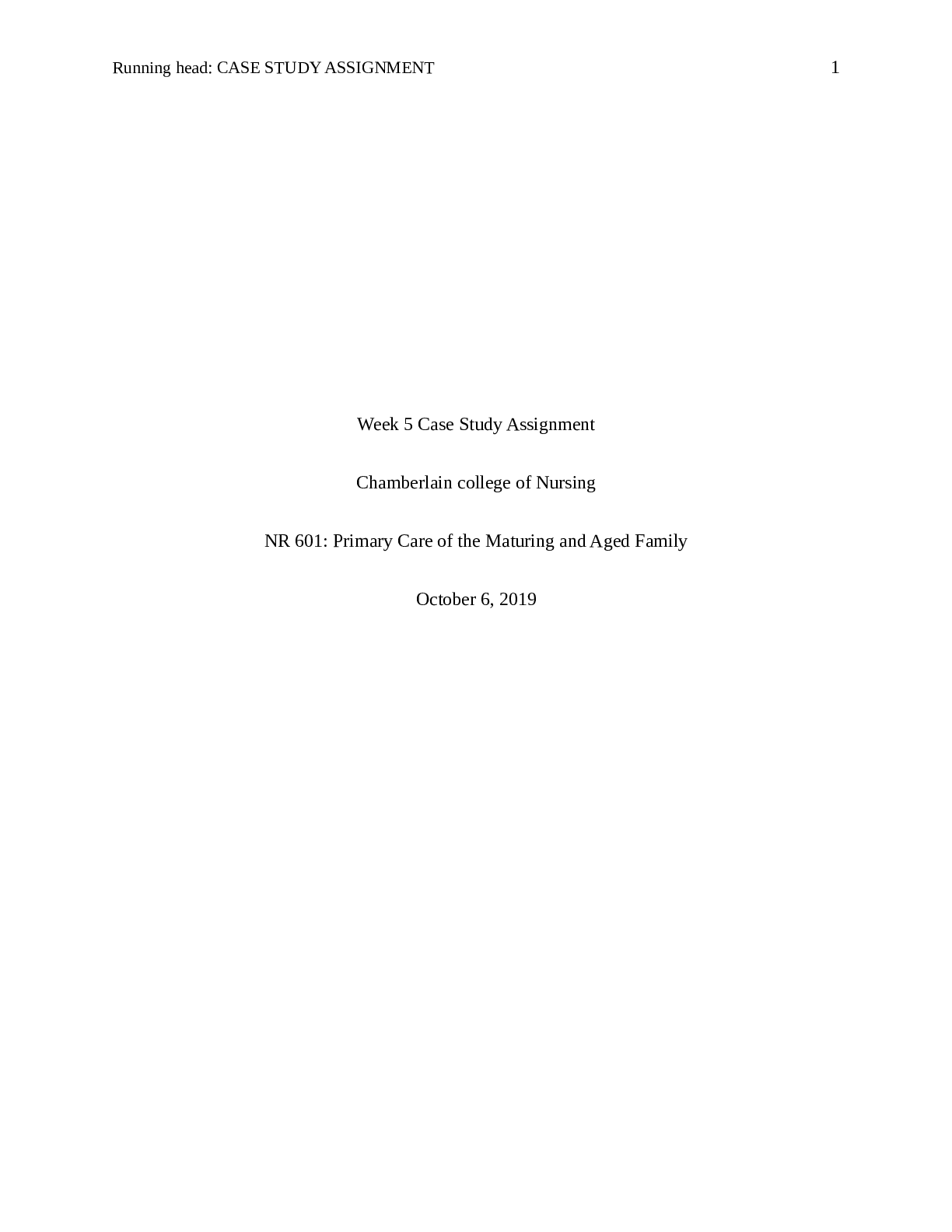
Buy this document to get the full access instantly
Instant Download Access after purchase
Add to cartInstant download
Reviews( 0 )
Document information
Connected school, study & course
About the document
Uploaded On
May 02, 2022
Number of pages
19
Written in
Additional information
This document has been written for:
Uploaded
May 02, 2022
Downloads
0
Views
115


 (1).png)

